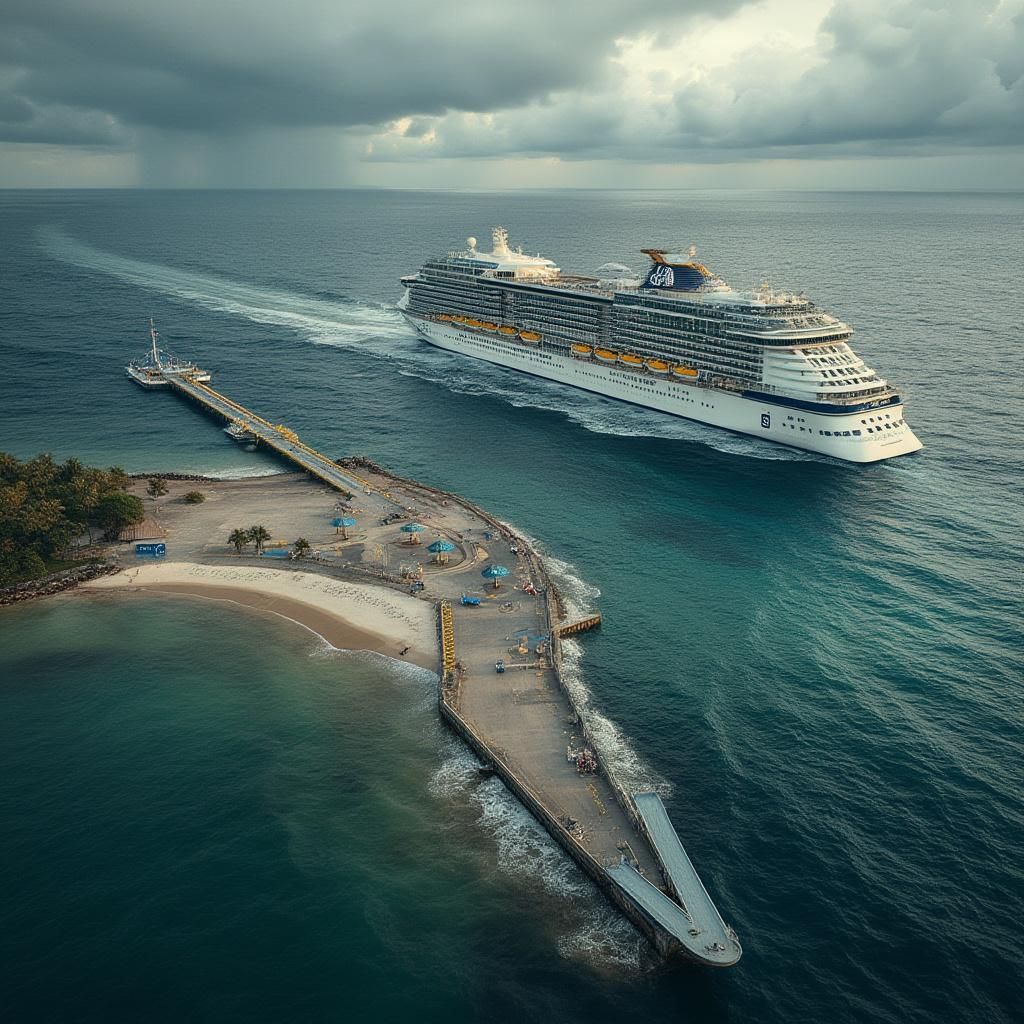Royal Caribbean's profit guide slips—costs, not demand, bite
Royal Caribbean cut its Q4 profit view below estimates as fuel, maintenance, and weather costs bite. Demand stays firm; margins, not bookings, take the hit.

Royal Caribbean expects fourth-quarter profit to land below Wall Street’s view, citing higher fuel, maintenance, and weather hits as the culprits on October 28, 2025, according to Reuters. The company guided Q4 adjusted EPS to $2.74–$2.79 versus analysts’ $2.89 estimate, even as it nudged its full-year outlook higher.
Costs, not demand, are doing the damage
Reuters reports that third-quarter revenue and adjusted profit beat or met expectations, but margins compressed year over year. That tells a clear story: the demand engine is intact, yet the cost side is dragging. Shares slipped in early trading on the update, a reflexive move when near-term profitability gets clipped.
The mix of headwinds looks familiar to anyone who follows cruise economics. Fuel is a top swing expense; drydock schedules are chunky and unavoidable; and weather can scramble itineraries, staffing, and port logistics in a hurry. Royal Caribbean also flagged an extended temporary closure of its private destination at Labadee, Haiti—an operational wrinkle that removes a tightly controlled, high-margin port day from select itineraries.
- Q4 guide: adjusted EPS of $2.74–$2.79 (Reuters)
- Street view: about $2.89 (Reuters)
- Full-year: guidance raised but still a touch under consensus (Reuters)
- Q3: revenue and adjusted profit beat/met, but margins tighter year over year (Reuters)
- Stock: fell in early trading on the update (Reuters)
Fuel and maintenance are the swing factors to watch
Fuel volatility is the cruise sector’s wild card. When oil moves higher, bunker costs creep into every sailing, and cruise lines can’t instantly pass that through. Drydock and maintenance add another layer: ships must be taken out of service periodically for regulatory and refurbishment work, compressing capacity and lifting costs in the quarter(s) where projects cluster.
Guidance that underwhelms despite solid demand often points to timing issues on costs. It doesn’t mean the business is structurally impaired; it means the cost curve’s shape matters. Investors typically look for three things from here: whether fuel trends ease, how heavy the drydock cadence is across upcoming quarters, and whether management can offset with pricing, occupancy, and onboard spending.
Labadee’s closure trims a quiet profit lever
Per Reuters, Royal Caribbean extended a temporary closure of its Labadee, Haiti destination. Private destinations like Labadee are strategic profit centers: they reduce port fees, concentrate onboard-like spending onshore, and allow tighter control of staffing and logistics. When a private port drops off the grid, ships are often rerouted to third-party ports, potentially raising costs and diluting ancillary revenue per guest.
Operationally, itineraries can absorb changes, but the margin profile shifts. For a company the size of Royal Caribbean, one destination’s closure won’t derail a year. Still, layered atop higher fuel and maintenance, it’s another straw on the quarterly camel’s back.
The read-through for cruisers: subtle, not seismic
For travelers, this update is more about nuance than immediate change. Cruise lines rarely slap on overnight surcharges based on a single quarter’s guide. Instead, they fine-tune pricing over seasons, adjust onboard promotions, and optimize itineraries and load factors.
If fuel and weather pressures persist, expect more surgical tweaks than sweeping moves. That could look like modest fare discipline on peak sailings, a sharper focus on onboard revenue (think excursions, specialty dining, and Wi-Fi bundles), or swapping in ports that help the economics. None of that diminishes the vacation experience; it just reflects how lines balance revenue and cost in real time.
Quick stats snapshot
- Q4 adjusted EPS guide: $2.74–$2.79
- Consensus estimate: $2.89
- Full-year outlook: raised, but still slightly below analysts’ consensus
- Q3: revenue/adjusted profit beat or met expectations; margins down year over year
- Shares: down in early trading after the release
(Source for all figures: Reuters, October 28, 2025)
Investor lens: what matters next
- Cost cadence: Are fuel costs stabilizing or still rising into Q4 and early 2026?
- Drydock density: How many ships are sidelined next quarter, and for how long?
- Demand signals: Bookings and pricing for 2026 sailings are the check on resilience.
- Destination flexibility: How quickly can Royal Caribbean re-optimize itineraries while Labadee is offline?
According to Reuters, analysts still point to healthy demand trends. If that holds, the near-term cost squall is a headwind, not a hurricane. The company’s decision to raise full-year guidance—even if it trails consensus—suggests management sees enough strength to absorb some of the cost hit. The Street, however, is laser-focused on quarterly trajectory, not just year-end finish lines.
Pros and cons for travelers
- Pros: Demand resilience usually preserves service levels and new-ship momentum; itineraries remain broad with swaps as needed.
- Cons: Fewer private-destination calls (like Labadee) in the near term; potential for tighter discounts on high-demand sailings.
Bottom line
Royal Caribbean’s quarter is a reminder that cruise profitability hinges on costs you can’t fully choreograph—fuel, maintenance, and weather—even when ships are full and onboard spending is robust. The guidance miss versus consensus is modest, but it spotlights how thin the margin for error can be in peak season. If fuel cools and Labadee returns, some of this reverses. Until then, expect management to lean on pricing discipline, itinerary optimization, and onboard revenue levers to keep earnings on course.
Summary
- Q4 profit guide under consensus due to higher fuel, maintenance, and weather impacts (Reuters).
- Full-year outlook raised but still shy of analysts’ average estimate (Reuters).
- Demand remains solid; margins, not bookings, are the pain point (Reuters).
- Labadee closure removes a profitable private-port day from select itineraries (Reuters).
- Watch fuel trends, drydock cadence, and itinerary pivots into early 2026.
